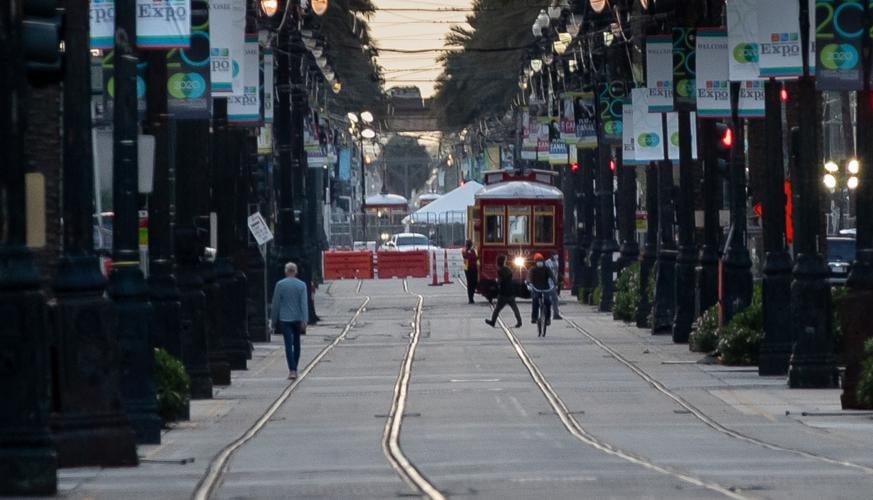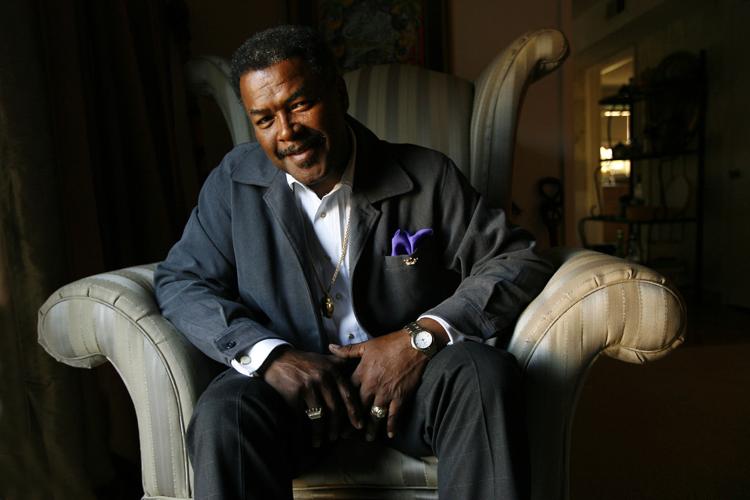Roughly 70% of the people who have died from coronavirus in Louisiana are black, a striking disparity for a state where African-Americans make up only 32% of the population that experts attributed to entrenched racial divides around economic opportunity and health care access.
Gov. John Bel Edwards shared the data during a press conference Monday to discuss the state’s progress in combating COVID-19, which has claimed the lives of 512 people in Louisiana since the first case was identified in the New Orleans area in early March.
The disproportionate impact of the virus, while massive, is comparable to other parts of the U.S. that are reporting coronavirus data by race. Edwards said he was troubled by the gulf and that his administration was looking for ways to address it.

“Obviously, this is a big disparity and we’re going to try to figure out what that is attributable to and what we can do about that as quickly as possible,” Edwards said.
Advocates welcomed the decision to release the information, saying that it would help the public better comprehend the pandemic and how it was spreading through different communities.
St. John the Baptist Parish now has the highest per-capita death rate of any county in the U.S. from the coronavirus, a grim statistic that pa…
“I’m glad the governor decided to release this data because it’s a conversation that’s been going on for some time now,” said Marc Morial, president of the National Urban League and former mayor of New Orleans, in an interview. “It’s necessary to help us understand what’s taken place here.”
For weeks, the state has been releasing data on the prevalence of pre-existing health conditions among those who die from COVID-19. Those numbers show very few of the dead had no underlying conditions, and some had more than one. In Louisiana, two-thirds of those who died from coronavirus also had hypertension, nearly half had diabetes and one in four was either obese or suffered from chronic kidney disease.
Alex Billioux, assistant secretary for the state’s Office of Public Health, said there are “significant” health disparities between white and black Louisianans.
The death toll from the new coronavirus in Louisiana’s nursing homes and long-term senior care facilities shot to 103 Monday, up from 60 on Fr…
“So if you go from a situation as a state where you have significant health disparities and you put something like this on top of it, it’s sad, but it doesn’t surprise me that unfortunately we’re seeing that community be so dramatically affected,” Billioux said.

As Gov. John Bel Edwards, left, watches, Dr. Alex Billioux, asst. state public health officer, right, answers questions while addressing steps being taken to fight the Coronavirus and the status of cases in the state during a press conference at the GOHSEP Monday April 6, 2020, in Baton Rouge, La.
Several experts said the prevalence of chronic health conditions among black people is clear evidence of lingering structural racism in health care delivery.

2007 King Zulu Larry Hammond sitting in a chair at his home in Algiers. Hammond was among the hundreds of Louisiana residents who died after contracting the coronavirus.
“These differences are produced by policy, not physiology,” said Amy Lesen, an associate professor and researcher in the Minority Health and Health Disparities Research Center at Dillard University. “They’re based on race and class bias in the health care system, access to health care and preventative care.”
While Louisiana health officials have yet to release any data on infection rates by race, U.S. Rep. Cedric Richmond, D-New Orleans, said Monday that state health officials had shared some of that data with him. It shows that rates of known coronavirus cases among black people were nearly as disproportionate as the death rates, he said.
Richmond said that he believes economic and cultural factors may have made it more difficult for African-Americans to quickly self-isolate as the pandemic took hold.
“If people had to go to work, they may have just dropped the kids at the grandparents, you know?” Richmond said.
Dr. Camara Jones, a family physician, epidemiologist and visiting fellow at Harvard University, likewise suspects the economic vulnerability of many black people in Louisiana has contributed to high infection rates from a virus that “should have been an equal-opportunity infector.”
Orleans Parish has the highest per-capita death rate for the coronavirus among all American counties to date, a new analysis by The Times-Pica…
“We’re seeing more infection in black communities, and that’s because of the front-facing jobs, not being able to work from home,” Jones said. “We’re equally susceptible biologically, but we’re not equally susceptible socially.”
As Morial put it: “I think it’s pretty clear that the blue-collar worker is unable to do their job from home. Either they’re gonna work under risky circumstances, or they’re gonna get laid off.”
Of the coronavirus deaths recorded in Louisiana thus far, more than half have occurred in Orleans and Jefferson Parishes, both of which have large African-American populations: New Orleans is 59% black; Jefferson, 23%. Other parishes that have been early hotbeds of COVID-19 are heavily African-American, including St. John the Baptist Parish, which has the highest per-capita death rate of any U.S. county and is 58% black.

Ronald W. Lewis seen in his House of Dance and Feathers museum. Lewis died of complications from coronavirus, which has taken a disproportionate toll on black Louisianans.
Richmond said he hoped the data — and the coronavirus crisis generally — would serve as a “wakeup call” for Louisiana.
“We can’t be OK with being No. 1 or No. 2 in obesity, in poverty, and being last in health outcomes anymore,” he said. “We have some of the most creative people in the country, great people, but we have not raised the bar in terms of health and education.”

A streetcar conductor navigates on Carondelet Street during the coronavirus pandemic In New Orleans, Sunday, March 29, 2020. (Photo by David Grunfeld, NOLA.com, The Times-Picayune | The New Orleans Advocate)
Jones said she wishes the sobering data would cause Americans to look inward, and to think more about the people on the front lines of the coronavirus crisis.
“We need to recognize all of these people who are keeping our society going as doing something in the public good — not just EMTs and respiratory technicians, but low-paid wage earners, people delivering food and keeping the grocery stores open,” she said. “All of these people have to be recognized as precious, and protected with PPE the same way the people in hospitals are."





















